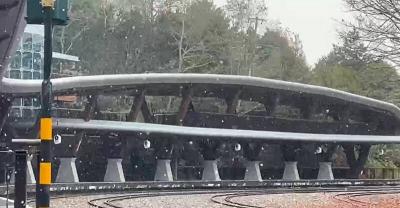The 823 Artillery Bombardment was a shock to Taiwan as well as the international community, but it did not deter reporters from wanting to go and get first-hand information, former war correspondent Yao Cho-chi (姚琢奇) said on Thursday at the Martyrs’ Shrine in Taipei ahead of the 53rd anniversary of the battle.
On Aug. 23, 1958, the People’s Republic of China (PRC) launched an intense artillery bombardment on Kinmen, sparking the Second Taiwan Strait Crisis — also called the 1958 Taiwan Strait Crisis — as the PRC attempted to seize Matsu and Kinmen from the Republic of China (ROC).
Yao, then a war correspondent for United Press International (UPI), was present on Kinmen when the ROC Armed Forces landed.
“We all knew it was dangerous, but all the war correspondents wanted in anyway,” Yao said, adding that during the ROC landing, there was an incident in which six correspondents went missing.
On Sept. 26, 1958, a group of reporters first took an ROC Navy landing craft and approached the outer waters of Liaoluo Bay (料羅灣), where they then transferred onto an amphibious Landing Vehicle Tracked (LVT), which was to take them to the beach amid the bombardment.
However, a failure with the landing mechanism on the LVT resulted in the vehicle sinking. Of the eight reporters onboard, only Youth Warrior Paper (now known as the Youth Daily News) war correspondent Yan Chung-tse (嚴重則) and a Japanese reporter with UPI survived.
The Japanese reporter eventually swam to shore after four hours, while Yan was rescued after floating in the sea for 30 hours.
To mark the anniversary of the bombardment, the Ministry of National Defense said President Ma Ying-jeou (馬英九) and Minister of National Defense Kao Hua-chu (高華柱) have invited all the correspondents who reported from the front lines during the bombardment to Kinmen, in recognition of their contribution in reporting on an important part of the nation’s history, to revisit the island.
A memorial was held on Thursday last week at the Martyrs’ Shrine in Taipei in commemoration of the six correspondents who went missing in the line of duty.
Yao, who led the commemoration, said he never forgot the six reporters, and after great effort, had finally succeeded in getting them enshrined in the Martyrs’ Shrine in 2008.
Returning to Kinmen and paying his respects to these brave colleagues touched him deeply, Yao said, adding that the events on Kinmen should remain fresh in people’s memory.
Yao said while reporting from Kinmen, he witnessed how the navy’s seamen all worked together to defend the island from invasion, recalling that he even saw a medic helping other wounded soldiers despite having been hit in the stomach by a stray bullet.
“At that time, everyone helped each other and didn’t think about life or death: It didn’t really matter,” Yao said. “It might sound strange now, but at that time it was the norm.”
According to Hung Chin-tseng (洪縉曾), a Broadcasting Corp of China correspondent who had been with Yao in Kinmen, an indicator of how bad the situation was was the fact that everyone had to sign a form saying they understood the life and death situation they was entering.
Hung said before the plane he took to Kinmen landed, the exploding artillery was causing water to splash up against the windows, and the moment they had got off the plane military personnel shouted at them to run to the end of the runway to try and find a spot were the artillery could not hit.
TRANSLATED BY JAKE CHUNG, STAFF WRITER

US President Donald Trump said "it’s up to" Chinese President Xi Jinping (習近平) what China does on Taiwan, but that he would be "very unhappy" with a change in the "status quo," the New York Times said in an interview published yesterday. Xi "considers it to be a part of China, and that’s up to him what he’s going to be doing," Trump told the newspaper on Wednesday. "But I’ve expressed to him that I would be very unhappy if he did that, and I don’t think he’ll do that," he added. "I hope he doesn’t do that." Trump made the comments in

NOT AN OPENING: Trump’s violation of international law does not affect China’s consideration in attacking Taiwan; Beijing lacks capability, not precedent, an official said Taiwanese officials see the US’ capture of the president of Venezuela as a powerful deterrent to Beijing’s aggression and a timely reminder of the US’ ability to defeat militaries equipped with Chinese-made weapons. The strikes that toppled Venezuelan President Nicolas Maduro signaled to authoritarian leaders, including Chinese President Xi Jinping (習近平), US President Donald Trump’s willingness to use military might for international affairs core to US interests, one senior official in Taipei’s security circle said. That reassured Taiwan, the person said. Taipei has also dismissed the idea that Trump’s apparent violation of international law could embolden Beijing, said the official, who was not

A cold surge advisory was today issued for 18 cities and counties across Taiwan, with temperatures of below 10°C forecast during the day and into tonight, the Central Weather Administration (CWA) said. New Taipei City, Taipei, Taoyuan and Hsinchu, Miaoli and Yilan counties are expected to experience sustained temperatures of 10°C or lower, the CWA said. Temperatures are likely to temporarily drop below 10°C in most other areas, except Taitung, Pingtung, Penghu and Lienchiang (Matsu) counties, CWA data showed. The cold weather is being caused by a strong continental cold air mass, combined with radiative cooling, a process in which heat escapes from

Snow this morning fell on Alishan for the first time in seven years, as a strong continental cold air mass sent temperatures plunging across Taiwan, the Central Weather Administration (CWA) said. The Alishan weather station, located at an elevation of about 2,200m in central Taiwan, recorded snowfall from 8:55am to 9:15am, when the temperature dropped to about 1°C, the CWA said. With increased moisture and low temperatures in the high-altitude Alishan area, the conditions were favorable for snow, CWA forecaster Tsai Yi-chi (蔡伊其) said. The last time snow fell at the Alishan weather station was on Jan. 10, 2018, while graupel fell there